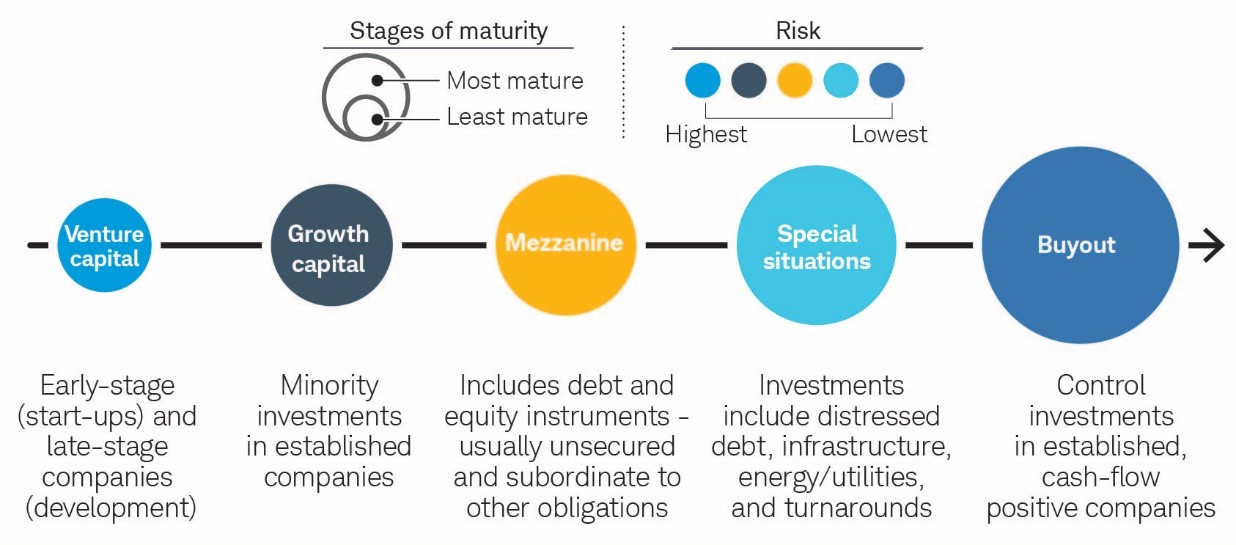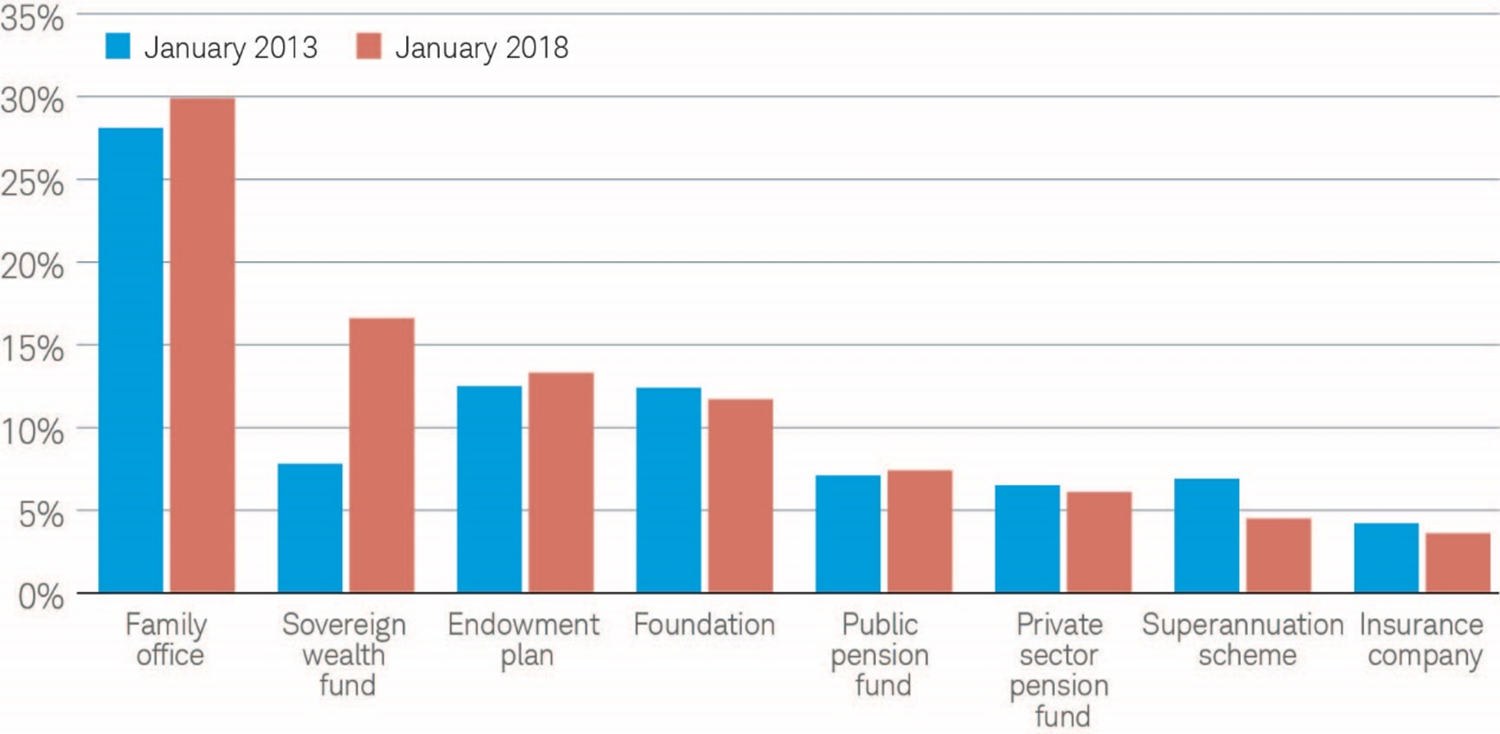Why should we be paying attention?

- Anthony B. Davidow, CIMA
"In today’s politically charged environment, private equity has become a common target for wealth inequality."
Presidential candidates argue that private equity firms make oversized returns, receive unfair tax benefits and displace workers. This makes for popular campaign rhetoric – but really misses the point of why we should be paying careful attention to private equity.
Investors often think about private equity when a company goes public via an Initial Public Offering (IPO). In many respects, the IPO is the culmination of the American Dream – taking an idea and turning it into a viable company. The headlines focus on the tremendous wealth made by founders as they ring the opening bell. This journey would likely not be possible without the capital, experience and guidance provided by private equity firms.
As we enter the late stages of this historic bull-market, and investors adjust their return expectations, private equity offers the potential for higher returns than many traditional options. Product innovation has focused on making private equity available to a broader set of investors, in a more liquid structure1.
With the commoditization of ‘advice’, advisors need to identify unique asset classes to demonstrate their value-added advice: private equity, private debt, real estate, infrastructure, and natural resources among others. The ability to analyze these strategies, and determine how to effectively use them in portfolios, will continue to be of tremendous value to investors.
What is Private Equity?
Private equity firms provide critical capital to early stage start-up companies. There are often multiple rounds of capital raised and ever-changing company valuations over time. What often doesn’t get enough attention though is the management and organization expertise that private equity firms provide. Founders often lack the expertise to manage a company through the growth phase - and bringing a company public should that be the desired path. We can all think of multiple examples of great founders being subpar business managers. Some are replaced as companies mature, and others are surrounded by ‘adults’ after going public.
Before investing in private equity, it’s important to understand the various stages of development and the corresponding risk associated. On one end of the spectrum you find Venture Capital, the earliest stage of development which naturally represents the biggest risk. On the other end of the spectrum you find Buyout opportunities, cash flow positive companies that may benefit from reorganizing or selling certain assets.

It should be noted that today many companies remain private much longer – and some will never go public. The number of public companies has been falling dramatically over the last couple of decades. Founders don’t want to answer to shareholders and the short-term mentality of investors. They can grow more rapidly while private, and there are now other sources of capital beyond going public to reward founders, employees and early investors.
Private equity represents a diverse set of investment opportunities. Private equity may represent innovative new technology, transformational gene therapy or inter-galactic travel. Private equity could seek to capitalize on new software being developed in Silicon Valley, drug research in Germany or a new bio-fuel being developed in Canada.
Why Should You Consider Private Equity?
Private equity has historically delivered attractive returns relative to traditional investments. With the current bull-market getting long in the tooth, many firms have significantly lowered their capital market assumptions for public market equities, leaving investors seeking higher returning investment options elsewhere. JP Morgan’s long-term assumptions2 (10-15 years) for private equity returns are 8.8% versus 5.6% (U.S. Large) and 5.7% (Developed International).
According to the Cerulli Alternative Investments 2018 Report, many of the largest allocators to private equity have been increasing their allocations over the last several years (see below).
Average Target Private Equity Allocation by Investor Type as a Percentage of AUM

Source: The Cerulli Report, U.S. Alternative Investments 2018 Report with data provided by Preqin.
Private equity has historically been limited to high-net-worth families, family offices and institutions. This was due to restrictions by the regulators in limiting access to these unique opportunities to Qualified Purchasers (QPs) and Accredited Investors (AIs). In a bold move, the SEC is in the process of evaluating the accreditation standards, with a goal of making these investments available to a broader group of investors including retirement plans. This bold move is a major step forward in democratizing this once elusive asset class.
"Advisors should get up to speed regarding the various structures and strategies available in the marketplace."
They should consider which of their clients may benefit from an allocation to private equity, and then determine the appropriate amount to allocate to the asset class. In order to determine the appropriate allocation, advisors should consider the following: risk and return expectations, time horizon, liquidity needs, product structure and the underlying investments. Advisors should consider diversification by manager, stage, region, industry and vintage. Proper diversification, in a modern structure, should broaden the opportunities, limit the risk and mitigate the cash drag associated with the J-Curve.
Private equity represents an attractive investment opportunity, especially in the late stages of this bull-market. Through product innovation, it’s now easier to access diversified private equity exposure, available at lower minimums with greater liquidity.
The Investments & Wealth Institute has developed a powerful three-part series, New Ammo for the Aflluent: Next Generation Private Securities that explains how to add significant value to your clients’ portfolios and your practice. This series explains in detail the opportunity set in the private security landscape, the major developments in legal and market structures, and a framework for including private investments into clients’ portfolios.
For addition information about Private Equity, please visit https://www.icapitalnetwork.com/category/insights/private-equity/.
1 Davidow, Anthony, “Private Equity: Innovation and Evolution”, Investments & Wealth Monitor, November / December 2019
2 JP Morgan Asset Management, “2020 Long-Term Capital Market Assumptions”, November 2019

